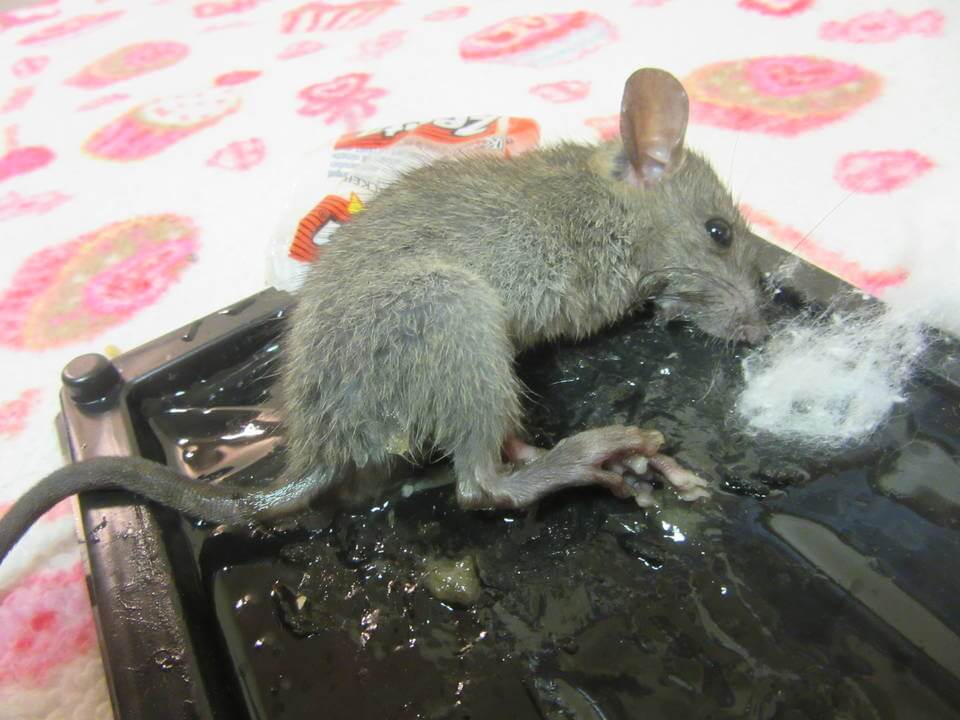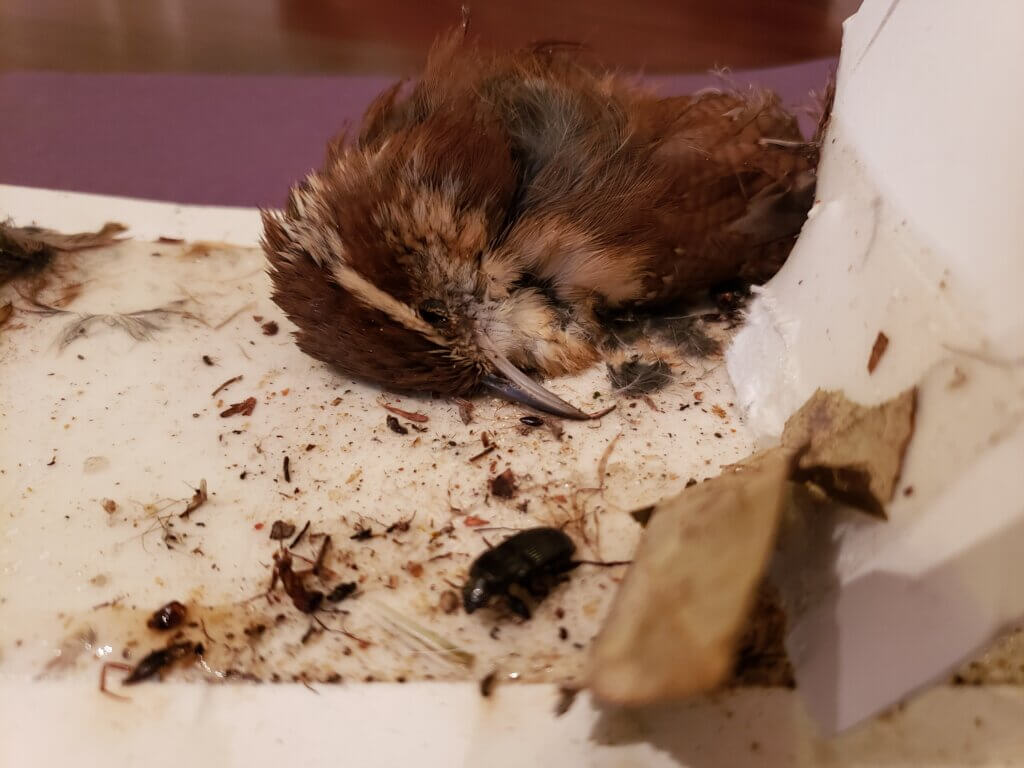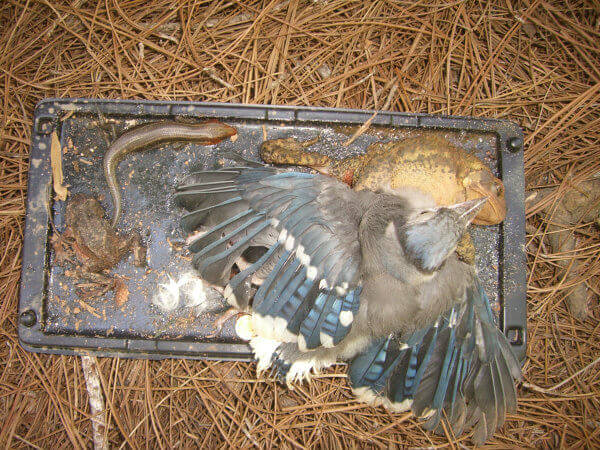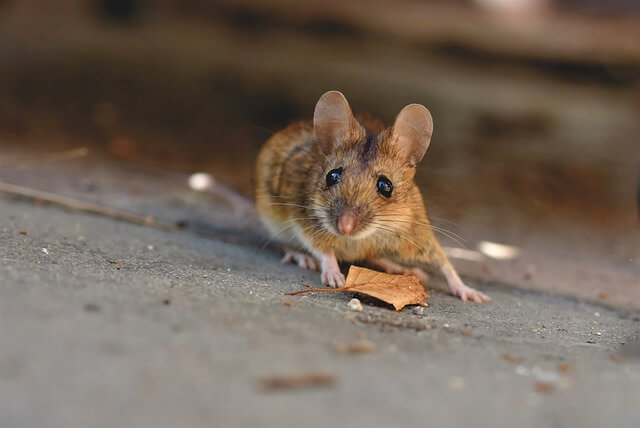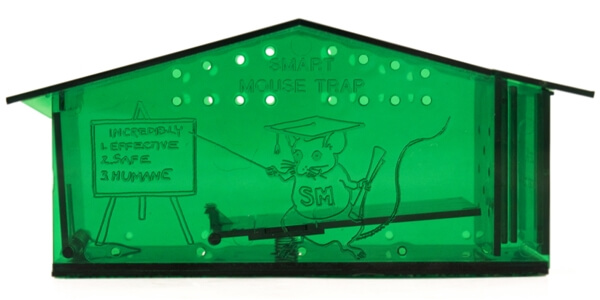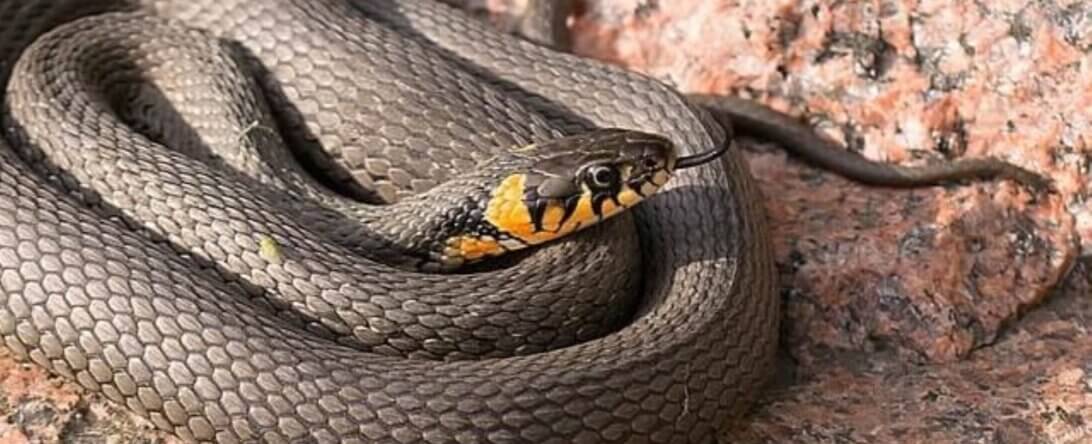Why You Should Never Use a Glue Trap
Also known as “glue boards” or “glue trays,” glue traps are pieces of plastic, cardboard, or fiberboard coated with a strong adhesive designed to trap any animal who wanders across or lands on their surface. They’re among the most inhumane devices on the market today.
Glue trap manufacturers generally direct consumers to throw away animals along with the trap, leaving them to suffer for days until they finally die from stress, starvation, or dehydration—all slow and painful deaths.
Some animals get their noses and mouths or beaks stuck in the glue and suffocate, which can take hours. Terrified animals struggle and scream as they try to free themselves from the glue, which causes them to become more stuck. Many of them tear off their fur, feathers, or skin and break bones, and some even chew off their own limbs in a desperate attempt to escape.
Rats and mice aren’t the only ones hurt by glue traps—the devices also capture birds, rats, squirrels, chipmunks, snakes, gerbils, kittens, and other small animals.
PETA often gets calls from people who have discovered small “nontarget” animals hopelessly trapped on these sticky boards. One distraught woman found a glue trap with a bird, two frogs, and a salamander stuck to its surface. All the animals were still alive when she found them but died later, despite her efforts to free them.
Glue traps are also dangerous to human health. In fact, the Centers for Disease Control and Prevention warns against their use because they increase people’s exposure to diseases.
What You Can Do
To keep unwanted houseguests away, remove food crumbs from counter surfaces, floors, and cabinets—and store dry food, including dog and cat food, in chew-proof containers. Seal trash cans using bungee cords on the lids.
Then, take steps to guide the unwelcome visitors outside and keep them there. Place ammonia-soaked cotton balls or rags (they hate the smell) in areas where animal droppings or nests have been seen, and be sure to give animals a few days to leave. Then seal entry points using foam sealant, steel wool, hardware cloth, or metal flashing. If you need to remove an animal, use a live trap like this.
More than 115 airports, hundreds of companies—including Target, Walmart Canada, CVS, and Dollar Tree—and even whole countries have banned glue traps. Unfortunately, some companies still sell them. Whenever you see these inhumane devices for sale, politely urge the store manager and company leadership to stop selling them because they cause animals to suffer—and point out that many companies nationwide that have already sworn off them.
If you encounter an animal stuck to a glue trap, pour a small amount of cooking or baby oil onto the stuck areas (avoiding the nose and mouth) and gently work the animal free. If you can’t free the animal, quickly rush them to a veterinarian or wildlife rehabilitator. Sometimes, euthanasia performed by a veterinarian is the most humane way to end a trapped animal’s suffering.
Animals, including mice and rats, who get caught on these boards are intelligent, sensitive, and capable of experiencing pain and suffering—just like the cats and dogs we share our homes with. Glue traps cause animals to endure slow, agonizing deaths. Never use them, and share this page with your family and friends so they can learn the truth about these vile devices.
Text peta2 to 30933 for ways to help animals, tips on compassionate living, and more!

Terms for automated texts/calls from peta2: http://peta.vg/txt. Text STOP to end, HELP for more info. Msg/data rates may apply. U.S. only.

